Plastic on Track: Barbie's History in Motorsport

- Oops!Something went wrong.Please try again later.
- Oops!Something went wrong.Please try again later.
"Hearst Magazines and Yahoo may earn commission or revenue on some items through these links."

There’s a film out soon about Scuderia Ferrari’s most famous driver. No, it's not a Schumacher documentary. I’m talking about the Barbie movie. Because at the turn of the millennium, Barbie was the hottest prospect in Formula 1 racing, fresh off a successful NASCAR stint, ready to prove herself in the 2000 season.
Off-hand, Barbie isn’t renowned for her racing resume, but with more than 64 years being everything she could be, her multitudinous talents never fail to surprise. Starting off as a doll in a basic swimsuit in 1959, Barbie was conceived by Ruth Handler as an avatar for girls to project their dreams onto. The doll's popularity was immediate and it exploded as Barbie's world expanded. Especially when it came to her cars.
Barbie’s first ride was an Austin-Healey 3000 Mk II in 1962, her second a non-specific, engine-exposed hot rod in 1963. That car was retrofitted as “Ken’s” in a later repackaging, but Barbie was at the when the green flag dropped. She didn’t hit the track, officially, in her early days, but a frankly worrying level of research for this piece has unearthed new ideas: Barbie was a thrill seeker who surely went racing under Mattel's nose.
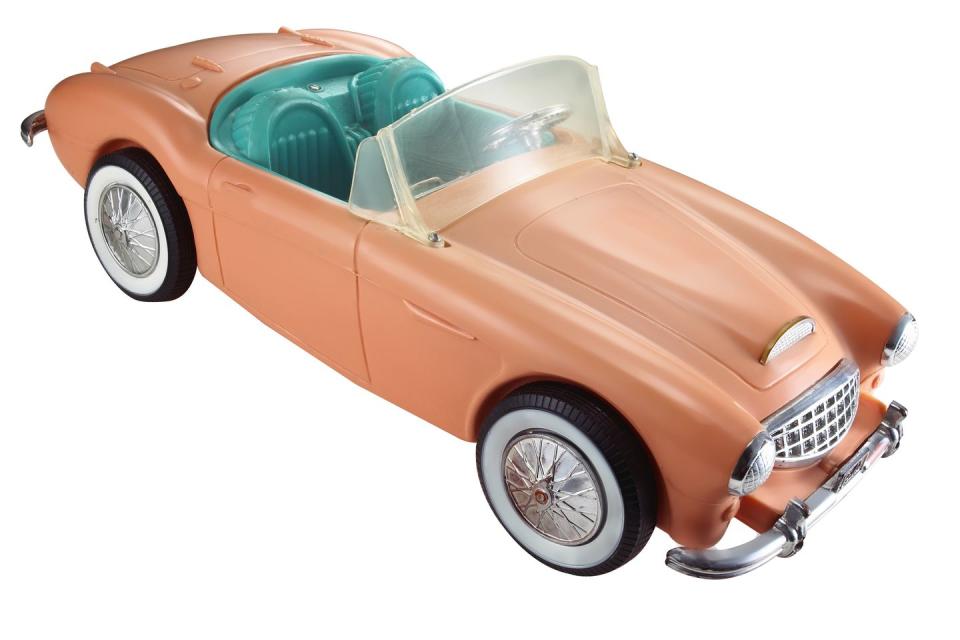
Having established her garage situation and dabbled in tennis, Barbie started down an extreme-sports path with skiing and windsurfing appearing in 1974’s Sport Set edition. By 1975 she’d entered the Winter Olympics. In 1985 she went to space, with the first astronaut edition, and by the end of the 80s she had dabbled in many vocations: rockstar, doctor, air hostess, and various forms of political ambassador.
In 1986 she started dirt oval racing. Just 14 years later she reached the pinnacle of motorsport. Here’s the complete history of Barbie's ascent from pop-culture icon to racing legend.
Outside Barbie's World
But first, a brief departure: the Barbie brand has appeared in real-world racing—and real-world racing embraced her. In 2010, an officially-sanctioned Barbie-branded Mitsubishi Lancer Evo IX ran in Swedish rallying, with driver Ramona Karlsson at the wheel, and Miriam Walfridsson co-driving. The pair didn’t get the results they might have wanted, but did run the same stages as Kimi Raikkonen during his World Rally Championship excursion that year, as part of Rally Sweden.
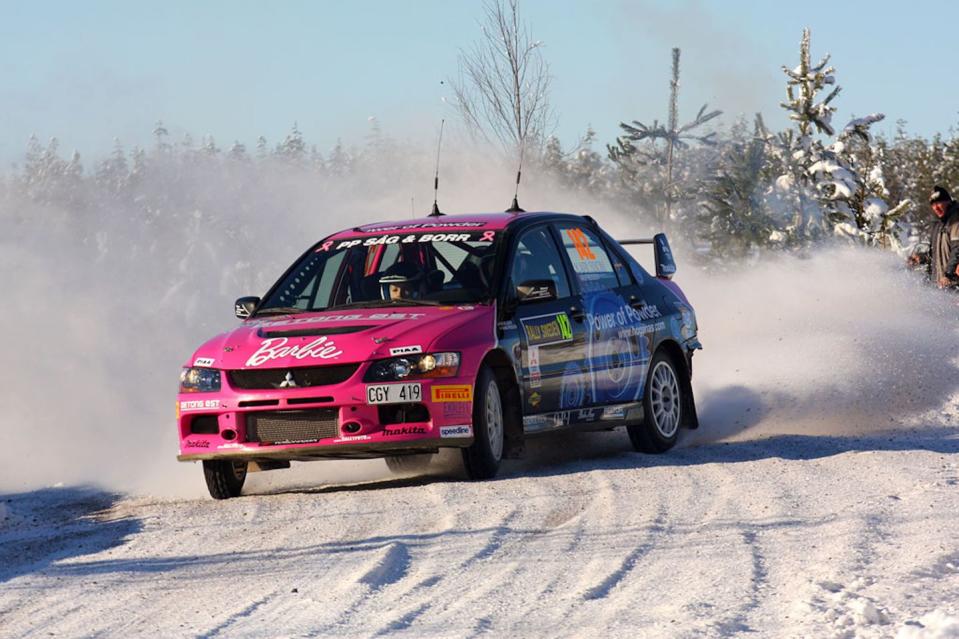
Mattel sponsored Canadian racer Ashley Taws from Formula Ford (wherein she became the first woman to take pole position in the Canadian championship in 2002) through a return to racing in NASCAR's Canadian Tire Series in 2007, following recovery from severe injuries sustained in a road traffic incident. Her gloriously pink Barbie cars owned the stigma a lot of women suffer in racing, that they’re just there as ornaments, and flipped the idea on its head—definitely Barbie energy.
Less officially, Barbie-themed cars have run LeMons events across the country, and GranTurismo, Assetto Corsa and iRacing are packed with Barbie liveries for the discerning driver.
Mattel also produced a doll of NHRA drag racer Ashley Force in 2005. It’s now a rarity to find an example, but there are still some for sale on eBay—other women icons in racing haven't been given the official treatment, although there have been various non-Barbie racing dolls.
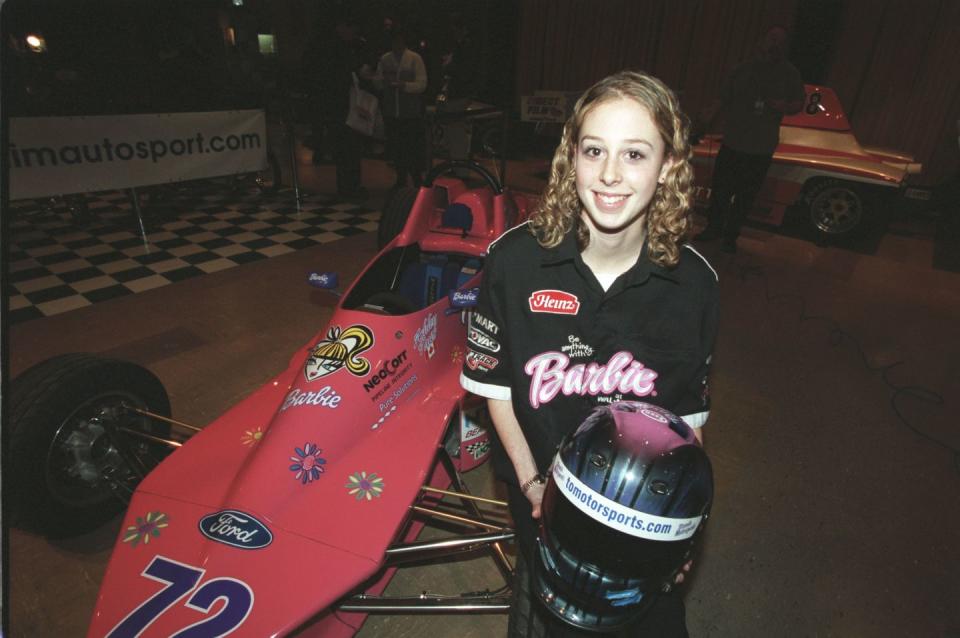
The Complete History of Barbie in Motorsport 1959-present
Barbie’s first racing car didn’t get flagged as such. In fact, although Barbie’s cars are very well-known, her racing activities seem to have been a little… underground for most of her lifespan.
(Not that lifespan’s quite the right word for Barbie. We merely experience Barbie in precious moments, across the years of our simple, relativistic idea of time. But Barbie is an idea, one which exists in a liminal space. So to call this a history is an attempt to project human concepts of linear time onto a completely different state of being. Barbie transcends all that.)
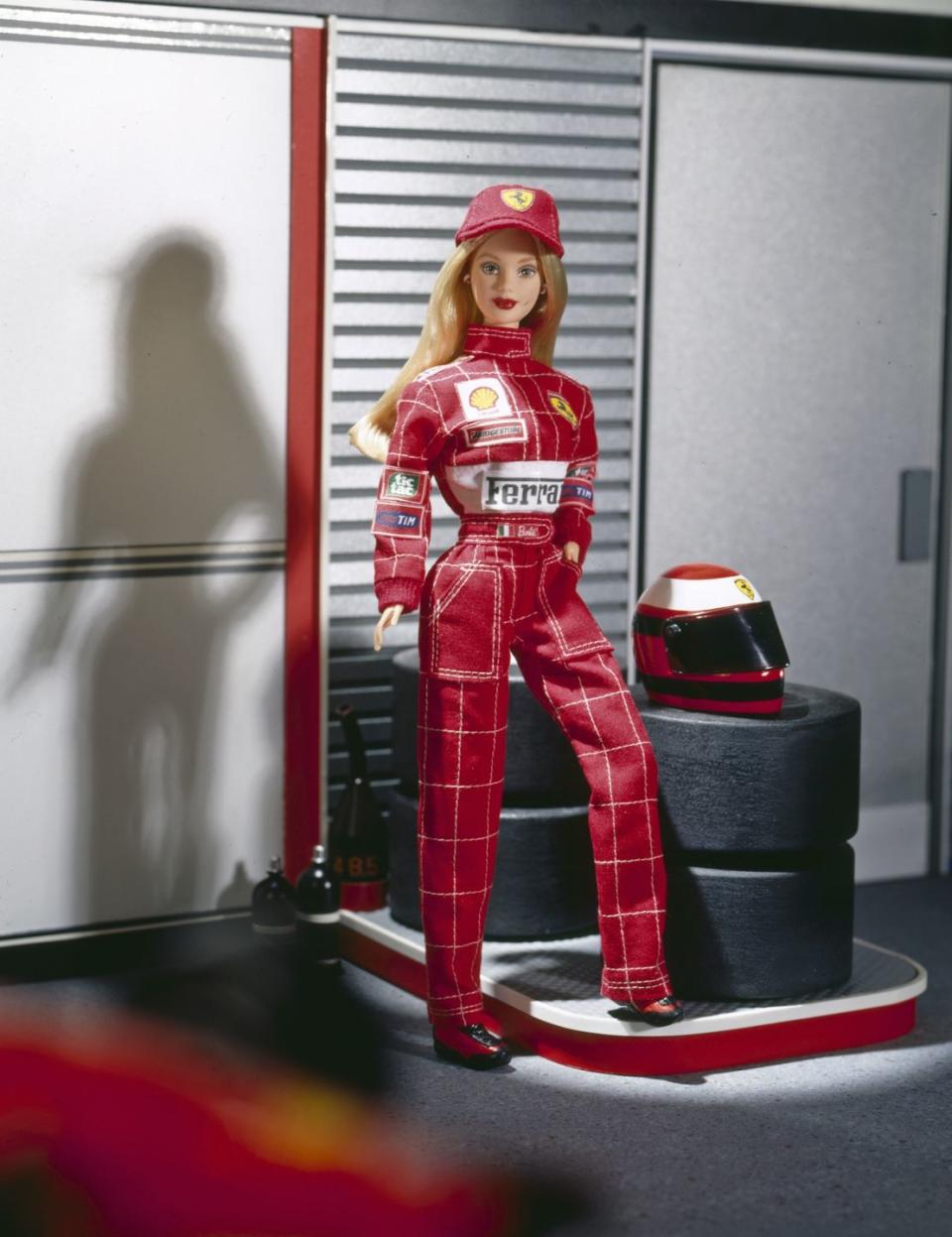
But Barbie's (un)officially sanctioned racing history starts in 1986, the year before Barbie got her first road Ferrari.
Listed as part of the Barbie Rockers range, the "rockin' buggy" didn’t arrive with a lot of lore in tow. Its looks merely fit its pithy description and the buggy was repeatedly reskinned over the following four years, becoming something like a beach buggy, in time. Doesn’t look like one though, equipped with its big front and rear wings for downforce, plus a roll cage. This "buggy" is wholly unlike the open-top golf-cart beach buggies of the time.
The rockin' buggy isn't quite an anything, but it’s definitely racier than a dune buggy. What it looks like, nonspecifically, is a dirt oval car. The only comparable toy I could find labelled a buggy was this very-definitely-not-for-leisure-crawling MASK car from the same year. So, I’m calling it: Barbie’s telling everyone her buggy's for the beach, but when the lights go out in the toy closet at night, she's sneaking out to Ascot Park Speedway to hack it 'round a figure eight.
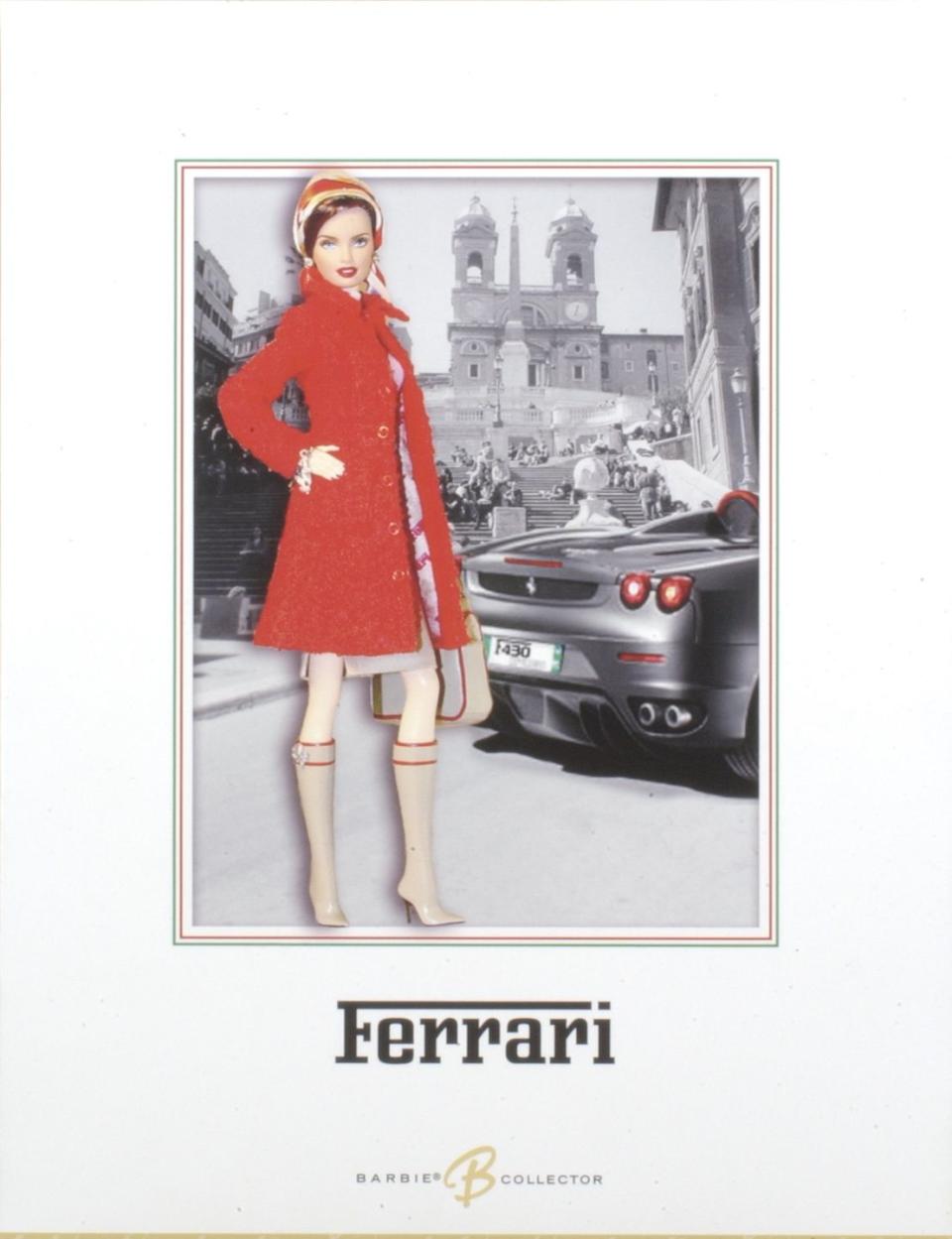
Maybe it was speedway winnings that scooped her the sweet Ferrari the next year (in red and white), but then, Barbie’s never been shy about whippin' hot metal. Her first Porsche 911 pulled into the garage a few years later, in 1992, and two years later she had a gloriously pink, sparkly Jaguar XJS, a chassis famous for Trans-Am and touring-car racing with roaring V-12s.
The first Barbie product with a Formula 1 logo on it was a tie-in to a collaboration she had with that early nineties stalwart, United Colors of Benetton. Barbie herself ended up in some truly unfortunate but period-accurate clothing combos. Boyfriend Ken was humored with a head-to-toe, full-kit winner look in Benetton F1 gear.
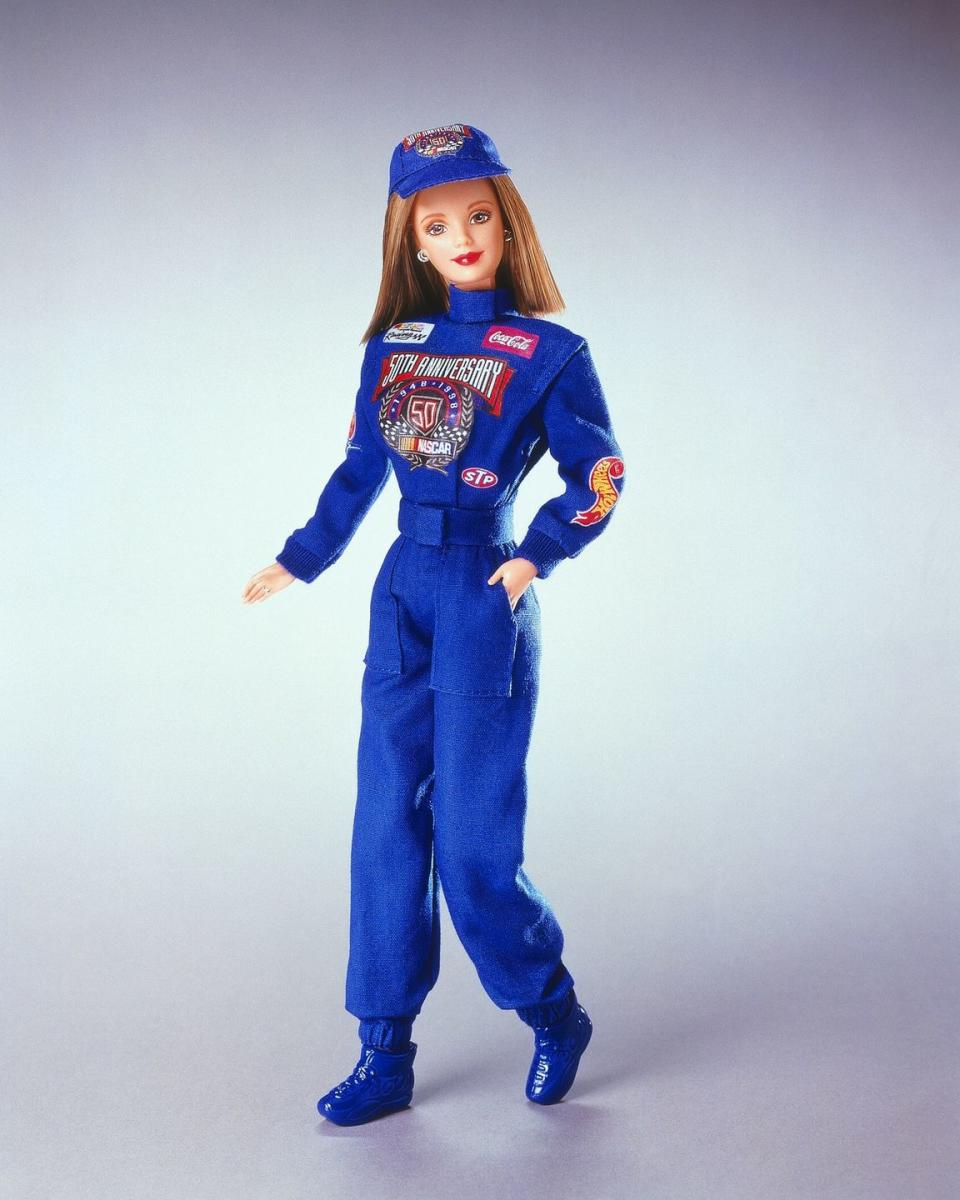
Barbie's first full-on, official drive took until 1998, though. She appeared as a NASCAR driver for the series’ 50th anniversary celebrations. And not just any driver. A winner. From the back of the box:
“Making sure her racing helmet is in place over her long, honey blonde hair, she lowers her working visor and straps herself into the car for the race of a lifetime.
“Suddenly the checkered flag falls… Barbie has come in first! A true NASCAR winner! It’s a championship season for Barbie Racing.”

The blurb reveals Barbie as both a championship-caliber 'shoe and a dominant team owner (eat your heart out, Richard Petty). The tie-in, from NASCAR’s perspective, is made clear further in the box blurb, with a nod to a fact many racing fans still fail to understand: this sport is for the girls.
“This exciting sport has attracted millions of fans. NASCAR racing is the fastest-growing spectator sport in America today… and almost half of the fans are women.
“Barbie doll is no exception. A fan of stock car racing and a big fan of champion Kyle Petty, it had always been her dream to qualify for a race.”
Just a girl with a dream. And her own racing team but hey, that’s a grand motorsport tradition. Barbie must’ve impressed because she got another season in 1999, apparently hanging out with Bill Elliot, whose racing number and McDonald’s livery she borrowed for her subsequent doll appearance.
The box text confirms she isn’t letting him past, though.
“The thrill of racing is in her blood! Barbie pulls on her helmet and straps herself into her car as the roar of the engine competes with a thunderous applause from thousands of loyal NASCAR fans. Barbie gives a ‘thumbs up’ and screeches on to the track once again.”
Barbie Racing took yet another title that year, with enough sauce to draw the attention of Maranello. The following year she signed to race in Formula 1. Barbie had long been a customer of Ferrari road cars, but her 2000 race-suit edition was a proper signing. Alongside real-world drivers Michael Schumacher and Rubens Barrichello, Barbie was a parallel-universe grand prix driver. As the box confirms:
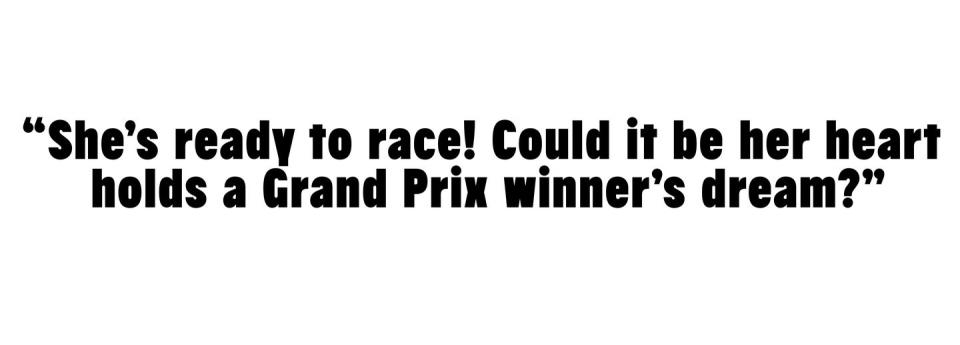
This is, to be clear, an officially sanctioned Ferrari and Barbie crossover. These dolls were made with the full endorsement of Scuderia Ferrari and it was a fairly long-term collaboration. By 2004 Barbie actually had a Formula 1 car, albeit a display model that was never sold on the wider market.
She was shown briefly in a 1:6 Ferrari open-wheeler, liveried to look like the 12-time grand prix winning F2003-GA at the International Barbie Doll Collectors convention in Chicago. Scant photo evidence exists of the display, but Barbie finally had an official Formula 1 car, which lands her in the books as a Ferrari driver.
Her on-track career went a little quiet after 2004 though. Perhaps FIA politics or juggling transatlantic commitments became too challenging. Maybe she refused to play second fiddle to Schumi.

She did, however, carry on with her racing fashion collaborations. In 2018, a red Barbie tractor was released, confirming she was still a part of the Ferrari family, as Scuderia Ferrari debuted its own farm implement to compete in the 2020 Formula 1 season.
A few years after her NASCAR title, Barbie returned to the paddock as a fan, her legacy as a driver secured. On the boxes of the Jeff Gordon and Dale Earnhardt Jr editions of Barbie's 2006-2007 NASCAR collab, the blurbs focus only on those drivers, not Barbie’s love of the sport or its large contingent of female fans.
That wasn’t the end, though. Barbie’s ‘I Can Be…’ range from 2008 was designed to draw kids playing with the dolls toward ambitious careers. And one of those careers was racing driver.
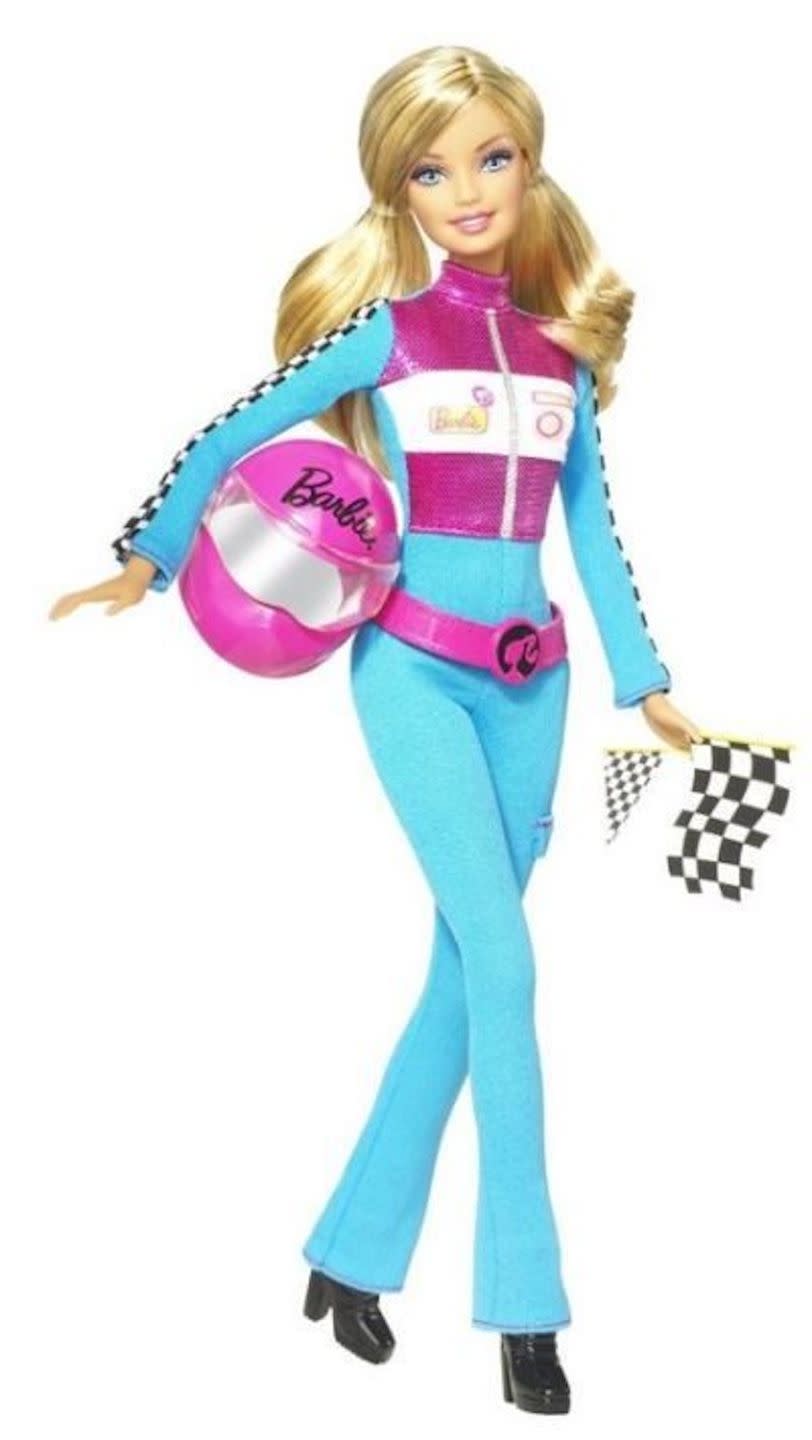
Her blue-and-pink-and-checkered racesuit hinted at a single seater return, but the box made it pretty clear this was Barbie’s sports car era. Maybe she took a turn in the Porsche Supercup? It would be a natural choice for the girl who’d been wheeling a 911 for 16 years at that point.
The doll's packaging pointed owners to now-defunct website that let you become a racing driver in an inevitably wonky online game. Remember, a lot of us were still on dial-up back in 2008. The game is long gone from the internet, but the Wayback Machine tells you to install Flash to see that content, which might be everything you need to know.
And that was the last time Barbie went racing, officially. But Barbie’s always had an unrestricted element to her talents. Sometimes things don’t need a detailed interpretation to let you imagine.
In 2021 a race suit and trophy were issued. Just an outfit for Barbie to wear, the box doesn’t elaborate on anything other than it’ll fit Barbie and all the other current dolls in the Barbieverse.
The only hint this suit offers is ‘Malibu 1959’ emblazoned down the legs. While 1959 is too late for Malibu’s first, short-lived racetrack, Paramount Ranch, maybe Barbie headed out to Ascot Park, even then. Or she took on hot rod racing at a time when women weren’t sanctioned by AAA—it's exactly the sort of renegade move we'd expect from Barbie.
Where’s she due to rock up next? Well, I couldn’t get a firm answer from the PR team at Barbie Racing, but perhaps the renewed interest in endurance racing could lure Barbie back to the Scuderia's Hypercar effort. Or I reckon they could move a few million units of the Garage 56 merch if Barbie took her long-time stock car talent to the Mulsanne.
But in our real world, Barbie will always race wherever you take her next.

You Might Also Like

